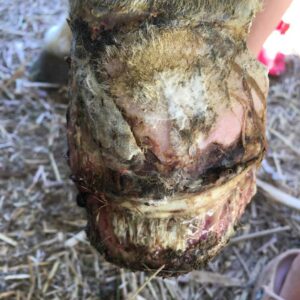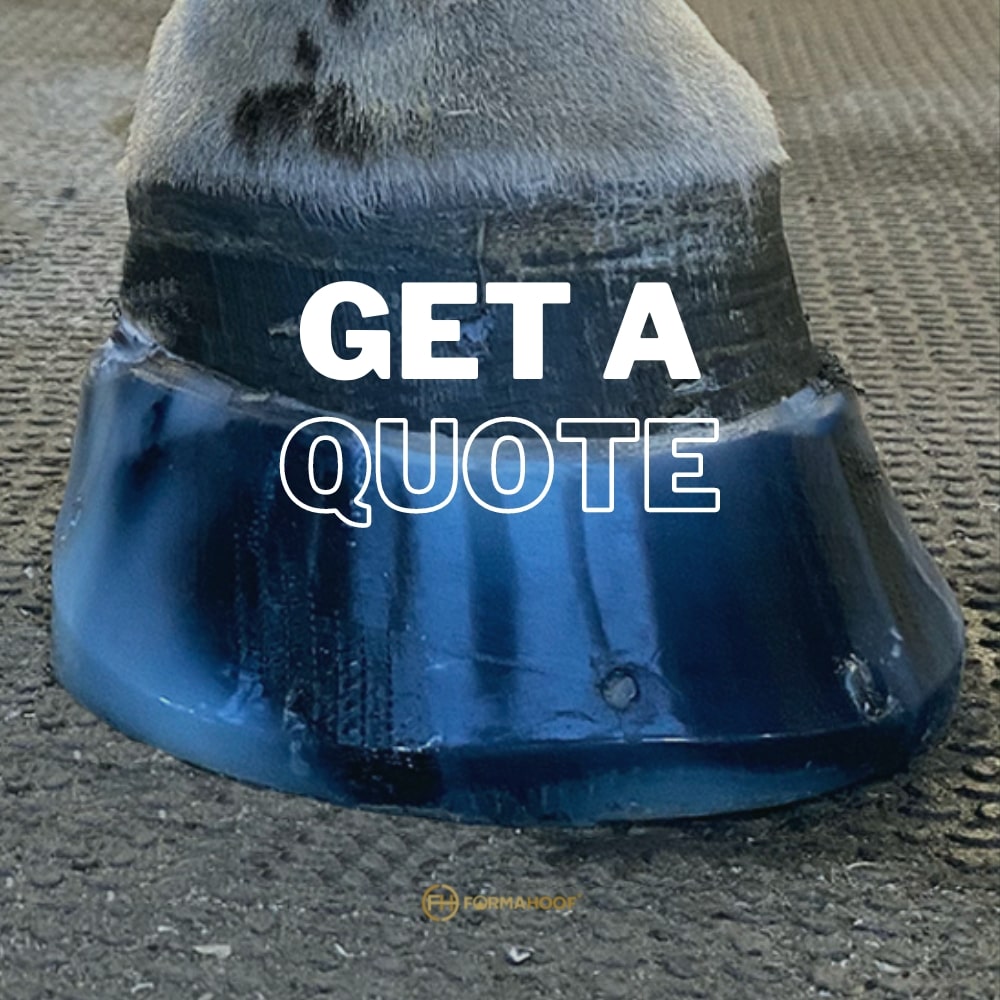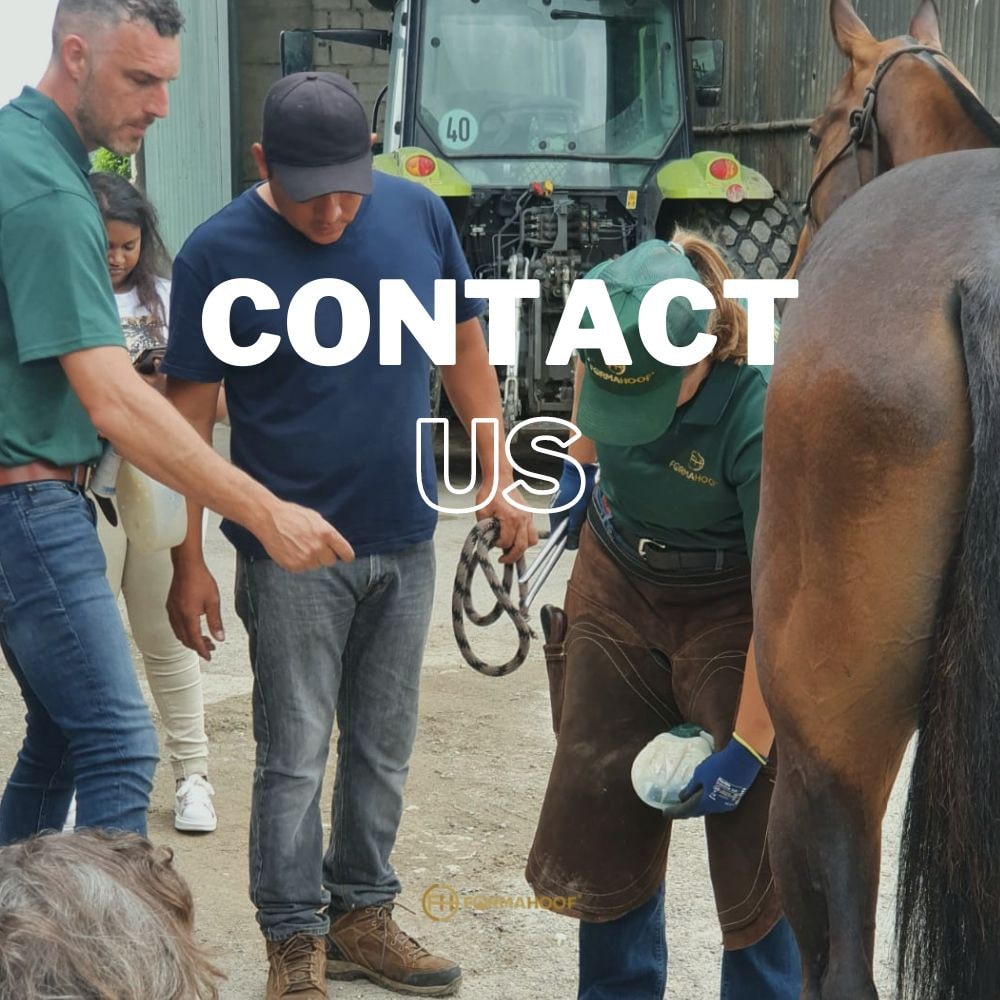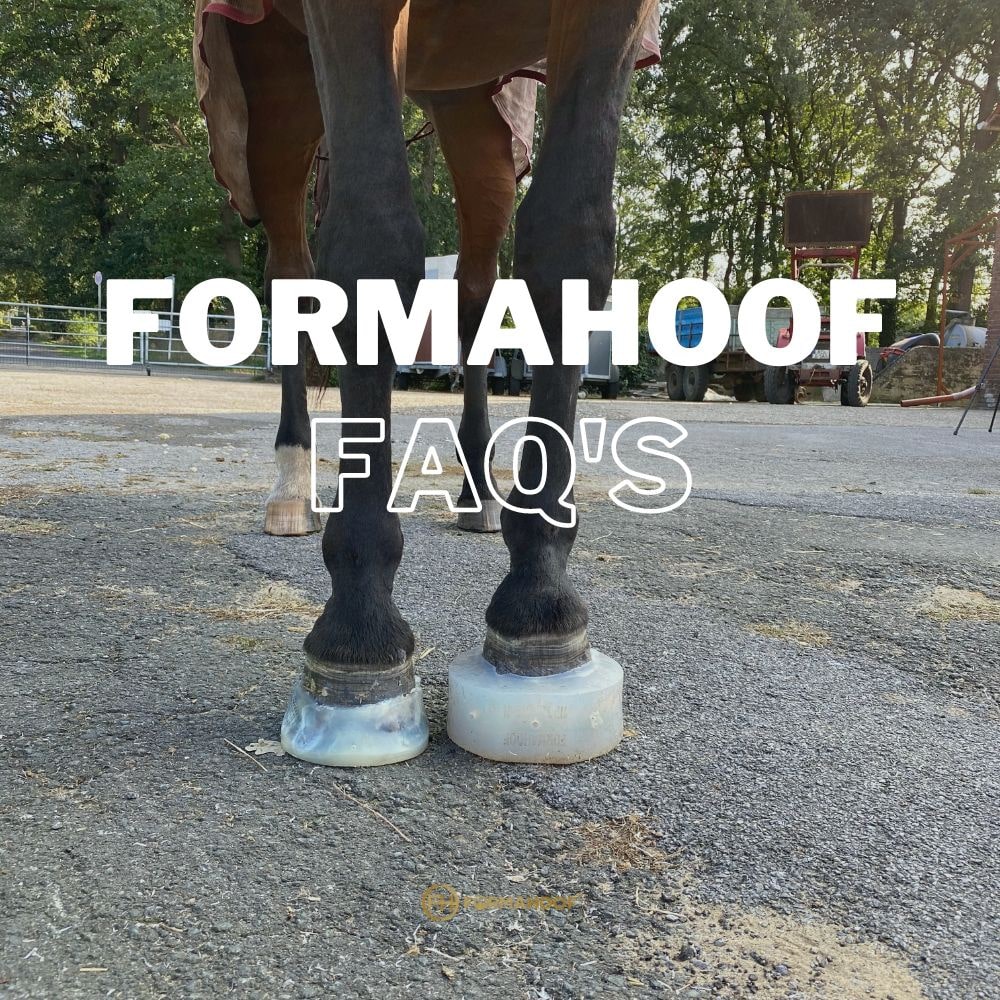Contracted heels in horses is a condition that can lead to discomfort and lameness. This guide will delve into the causes, diagnosis, and treatments, with a special focus on how FormaHoof can be an effective solution.
What are Contracted Heels?
Contracted heels occur when the heels of a horse’s hoof shrink or move closer together, exerting pressure on the inner structures of the hoof. This can cause pain, lameness, and long-term hoof damage.
Causes of Contracted Heels
- Long Toe/Low Heel: The horse’s weight rotating over a long toe draws the heels inward.
- Non-Weight Bearing: A lack of weight on the foot, often due to limb injury, can cause contraction.
- Lack of Exercise: Restricted movement leads to decreased blood flow in the foot, drying out the hoof which then contracts.
- Physical Restriction: Use of casts or bandages for lengthy periods.
- Poor Shoeing Practices: Nails or clips placed too far back on the hoof can contribute to contraction.
Identifying Contracted Heels
Diagnosing contracted heels involves observing the horse’s hoof shape and gait. Key indicators include:
- Narrowing of the heel area compared to the rest of the hoof.
- A noticeable decrease in the width of the frog (the V-shaped part of the hoof).
- Signs of discomfort or lameness in the horse.
The Consequences of Contracted Heels
When left untreated, contracted heels can lead to various complications, such as:
- Hoof Pain and Lameness: The horse may experience discomfort and changes in gait.
- Decreased Performance: Athletic horses may show a decline in their performance levels.
- Long-Term Hoof Damage: Persistent contraction can cause irreversible changes in hoof structure.
The FormaHoof Solution
The Rational Approach to Hoof Care
FormaHoof represents a significant advancement in equine hoof care, revolutionizing the approach to treating contracted heels and various other hoof conditions. At the core of this technology is the application of a liquid-fit artificial hoof that seamlessly conforms to the natural hoof, ensuring a precise and customized level of support. This innovative method replicates the ideal conditions of a perfect barefoot hoof, providing optimal angles and comprehensive support and protection.
One of the most compelling aspects of FormaHoof is its compatibility with additional shoeing when necessary. Unlike traditional hoof care methods that involve nailing through the hoof wall, potentially causing repeated trauma, FormaHoof allows for the nails to be inserted directly into the FormaHoof application.
This approach preserves the natural integrity of the hoof wall, fostering an optimal environment for the growth of a healthy hoof. By aligning with the logical principles of hoof health and maintenance, FormaHoof offers a solution that not only addresses immediate hoof issues but also promotes long-term wellbeing. It’s a method that resonates with common sense, prioritizing the horse’s natural hoof structure and health.
How FormaHoof Corrects Contracted Heels
- Restores Natural Hoof Angles: FormaHoof corrects the angles of the hoof, aligning them to what would be observed in a perfectly structured hoof.
- Encourages Healthy Hoof Expansion: The application allows for natural hoof growth and expansion, promoting overall hoof health.
- Reduces Stress on the Heel: By providing support and evenly distributing weight, FormaHoof alleviates the stress that contributes to heel contraction.
- Mimics Natural Functionality: The artificial hoof created by FormaHoof replicates the biomechanics of a healthy hoof, enhancing the horse’s comfort and mobility.
Implementing FormaHoof Treatment
The Application Process
The application of FormaHoof is straightforward and can be carried out by anyone that can trim their own horse’s hooves*. It involves:
- Cleaning and preparing the hoof.
- Standing the horse in the reusable Mould.
- Applying the liquid Advanced Polymer, which then sets to form the artificial hoof.
- Adjusting the fit to ensure optimal alignment and support.
NOTE: in the UK you must be a qualified farrier to apply FormaHoof due to the Farriers (Registration) Act 1975. You can find a hoof care professional offering FormaHoof applications worldwide via the Applicator search.
Monitoring and Maintenance
Regular check-ups are essential to monitor the horse’s progress and make any necessary adjustments. FormaHoof’s design allows for easy reapplication and adaptation as the horse’s hoof condition improves. One Mould can be reused up to 100 times and addresses more hoof problems than contracted heels, see FormaHoof case studies to learn more about how FormaHoof effectively treats a wide range of hoof problems.
Contracted heels can be a challenging condition for horses, but with FormaHoof, there is a viable, effective solution. By providing a liquid fit artificial hoof, FormaHoof not only addresses the immediate issues associated with contracted heels but also promotes long-term hoof health and functionality. For horse owners seeking a non-invasive, next level treatment option, FormaHoof represents a significant step forward in equine hoof care.














